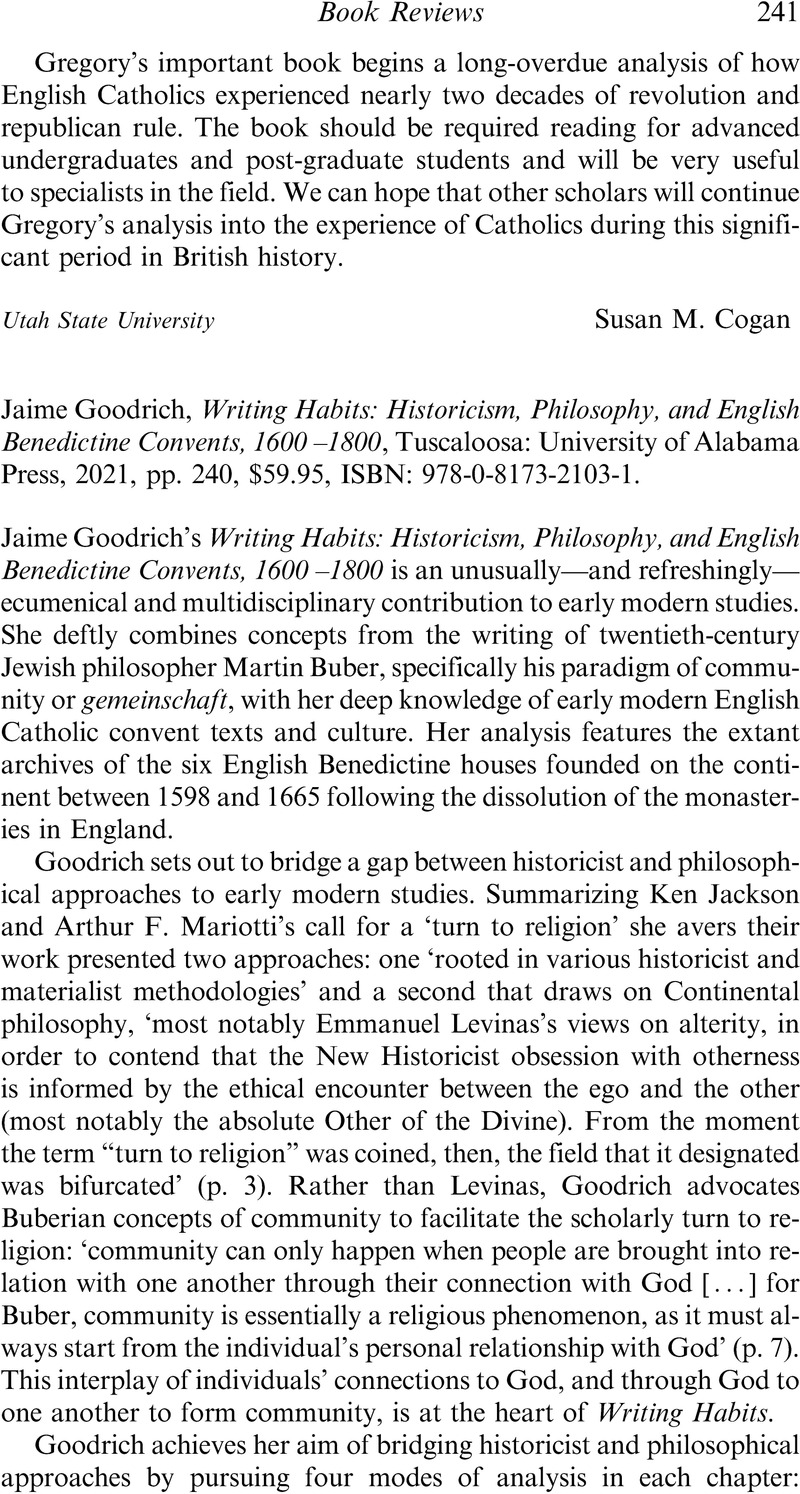No CrossRef data available.
Article contents
Jaime Goodrich, Writing Habits: Historicism, Philosophy, and English Benedictine Convents, 1600 –1800, Tuscaloosa: University of Alabama Press, 2021, pp. 240, $59.95, ISBN: 978-0-8173-2103-1.
Review products
Published online by Cambridge University Press: 07 November 2022
Abstract

- Type
- Book Review
- Information
- Copyright
- © The Author(s), 2022. Published by Cambridge University Press
References
1 Nicky Hallett, Lives of Spirit: English Carmelite Self-Writing of the Early Modern Period (London and New York: Routledge, 2007).
2 Tonya J. Moutray, Refugee Nuns, The French Revolution, and British Literature and Culture (London and New York: Routledge, 2016).
3 Victoria Van Hyning, Convent Autobiography: Early Modern English Nuns in Exile (Oxford: Oxford University Press, 2019).
4 Caroline Bowden et al, eds. English Convents in Exile, 1600–1800, 6 vols. (London: Pickering & Chatto 2012 –13).



